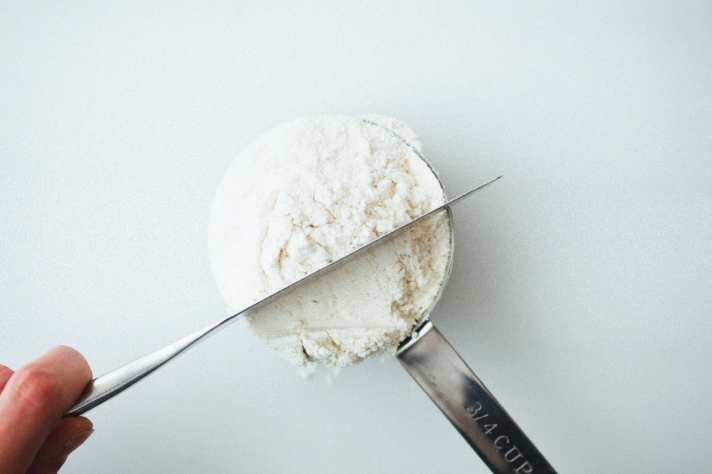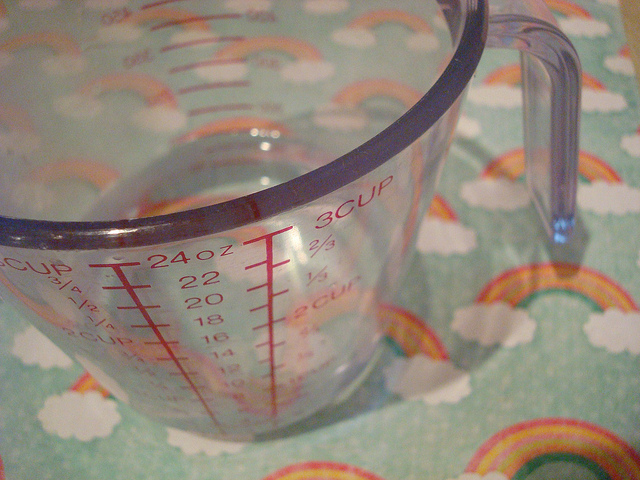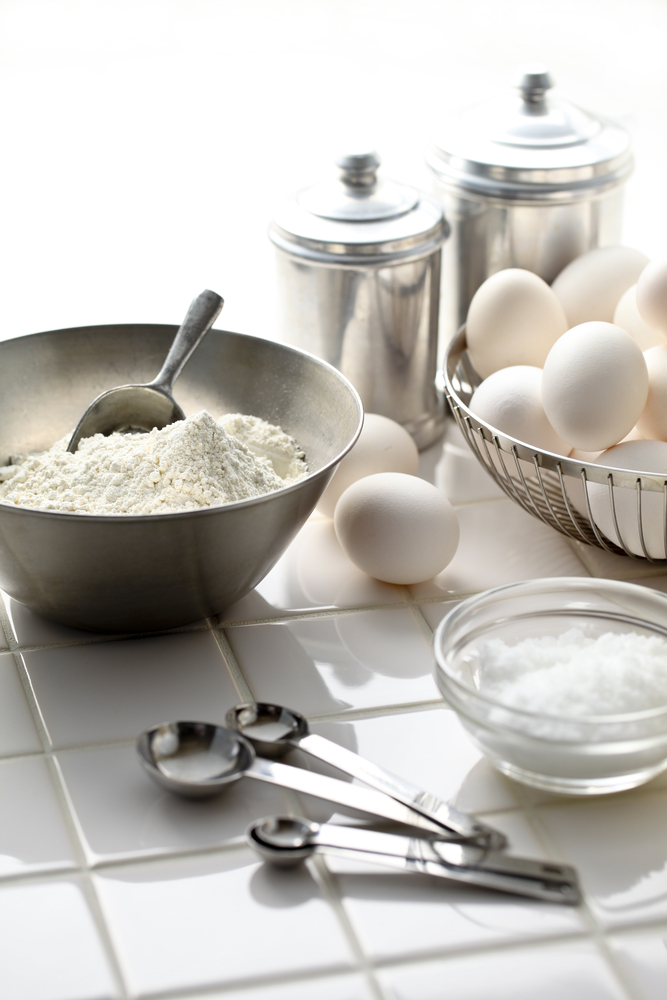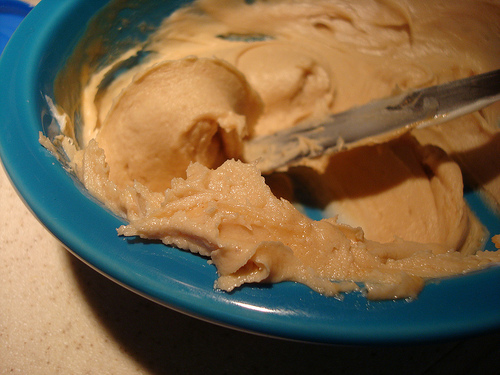Do you understand the types of measuring cups and spoons? Even though it might seem elementary, educating yourself on the proper measuring vessels for both liquid and dry ingredients is an important aspect of cooking and baking. Using the proper measuring cup for the project at hand will help you attain consistent, delicious results — regardless of what you’re cooking, from rich sauces to risotto to light and airy decorated cakes. Here’s a brief overview of the different types of measuring cups, including measuring spoons. We’ll discuss not only what they are and their primary purposes, but some tips for tricky ingredients, as well.

Dry ingredient measuring cups
These measuring cups may come in plastic, stainless steel or silicone, but are characterized by a flattened top. They can be used to scoop ingredients (say, sugar from a bag), but the flattened top allows them to be leveled off. Because these cups are meant to be filled, they typically will come in sets including common measurements. A typical set includes one each: 1/4 cup, 1/2 cup, 3/4 quarters cup and 1 cup.

Photo via CakeSpy
Liquid ingredient measuring cups
For wet ingredients, you’ll use a cup that looks sort of like a pitcher. It’s frequently made of clear or translucent plastic, and has lines marking common measurements on the outside of the cup, which make it easy to determine the amount of liquid. The pitcher-like spout on top makes it easy to pour liquids such as milk, melted butter or water into a batter or any sort of cooking project.

Measuring spoons
Like dry ingredient measuring cups, measuring spoons are available in a number of different materials, including stainless steel, plastic and silicone. They can be flat or rounded on the bottom. Because of their small size, they can be used for both liquid or dry ingredients. Typically, they will come in sets including commonly used measurements such as 1/4 teaspoon, 1/2 teaspoon, 1 teaspoon and 1 tablespoon. If you find measuring spoons hard to balance with liquid ingredients, there is even a shot glass style measuring cup available for smaller amounts.
Why not use interchangeably?
Sure, you can see why you need the spoons to measure small amounts of ingredients. But why do you still need two types of measuring cups? Let’s discuss. Technically, you could measure wet ingredients in dry ingredient measuring cups. However, once full, your balance has to be absolutely perfect to transfer the cup to your mixing bowl without spilling even a drop. Do you really want to add unwanted stress to your cooking?
As for using a liquid ingredient measuring cup for measuring dry ingredients, resist the temptation. Since you cannot level off amounts in this type of cup, there is a higher chance of measuring incorrectly, which can mess up your entire recipe. Plus, the shape of the cup makes tasks like packing brown sugar a tiresome chore.

Photo via CakeSpy
What about thick liquids or semi-solid ingredients?
Dividing “liquid” and “dry” is easy enough. But what about thick liquids, such as molasses or honey? Or solid but malleable ingredients? For thick liquids, such as molasses or honey, use your liquid measuring cups, but to ensure easy removal, give the cup a light spray of non-stick spray before measuring. It will form a barrier between cup and ingredient, ensuring that it slips out of the cup with ease. For semi-malleable ingredients, such as peanut butter, mashed avocado, or softened butter, use your dry ingredient measuring cups. If the ingredient is sticky, you can use the trick of spraying the cup with non-stick spray.

What about scales?
For the most accurate measurements, use a kitchen scale. It will have a “tare” feature that will allow you to account for the weight of the cup or measuring vessel, so that you can measure your ingredients to the exact weight. While cup and spoon measurements are generally fine for at-home baking, professional bakers will often use scales to ensure precision and consistency in their baking. A scale is especially helpful for bulky substances, such as chopped chocolate or nuts, which may be tough to measure in a cup.

Share tips, start a discussion or ask one of our experts or other students a question.
No Responses to “Our Cups Runneth Over: Types of Measuring Cups (and Spoons)”